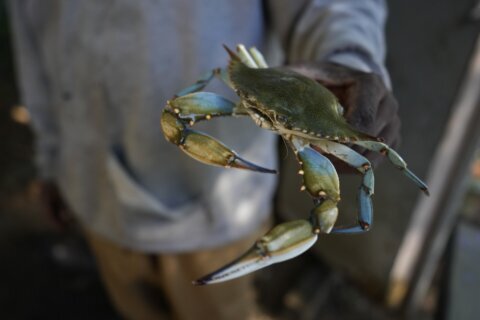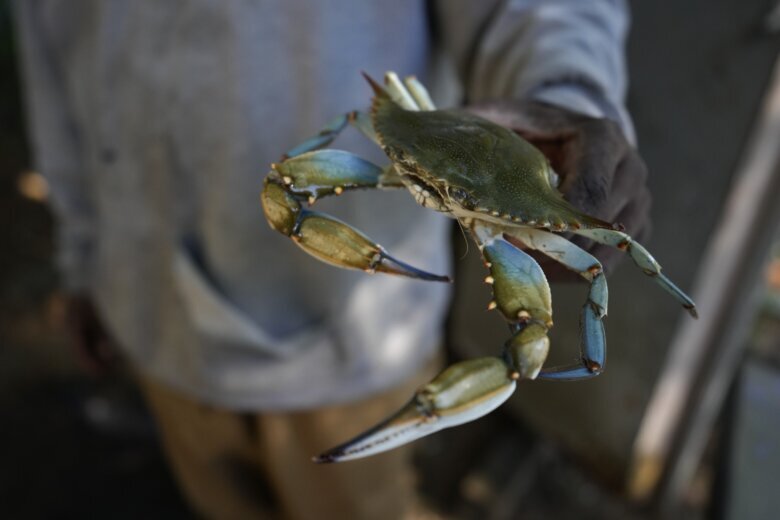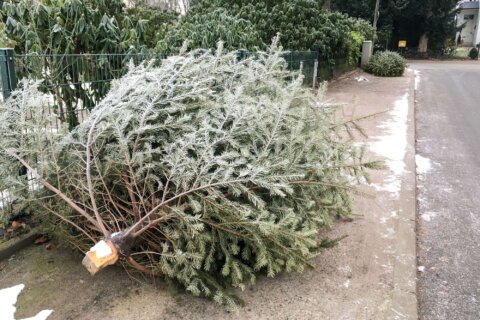
The number of blue crabs in the Chesapeake Bay and its tributaries is on a downturn, according to the results of the 2022 Blue Crab Winter Dredge Survey.
This year’s survey estimated total crab abundance at 227 million, which is the lowest in the survey’s 33-year history, according to a news release. It is down from 282 million in 2021. The survey is compiled annually by the Virginia Marine Resources Commission and the Maryland Department of Natural Resources.
Adult female and male crab populations both decreased, with males at record lows and the number of juvenile crabs continuing a troubling three-year below average trend.
“The results of this year’s survey continue a worrying trend for blue crabs in the Chesapeake Bay region,” said Chesapeake Bay Foundation Senior Regional Ecosystem Scientist Chris Moore. “The continued low abundance of juveniles and adult males indicates the urgent need for action to protect these segments of the population.”
He said the survey underscored a need to protect adult females in order help ensure better numbers in the future.
“It is likely that the loss of grasses is contributing to the blue crab’s decline, along with water quality challenges and predation by invasive blue catfish,” Moore said.
“Fisheries regulators and scientists must work quickly to identify the key ecosystem factors influencing blue crab recruitment and survival so that they can be mitigated to ensure a healthy blue crab population in the future.”
WTOP’s Thomas Robertson contributed to this report.









